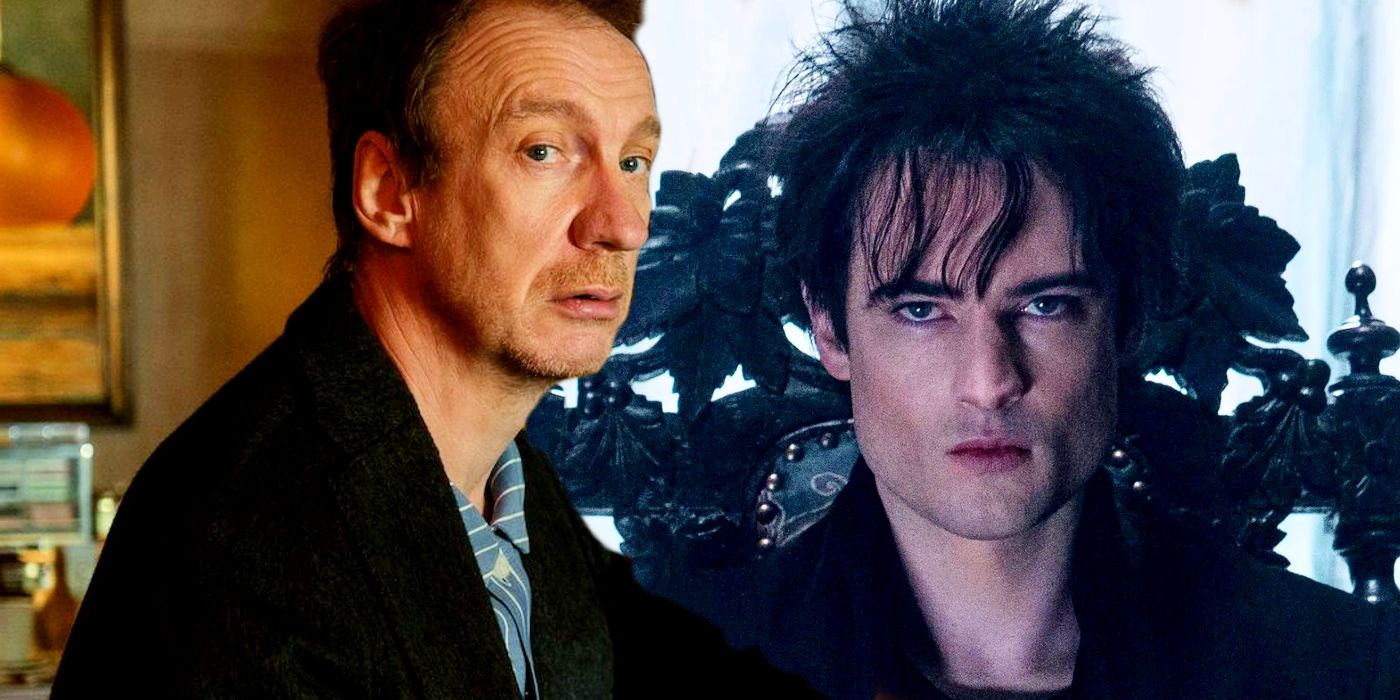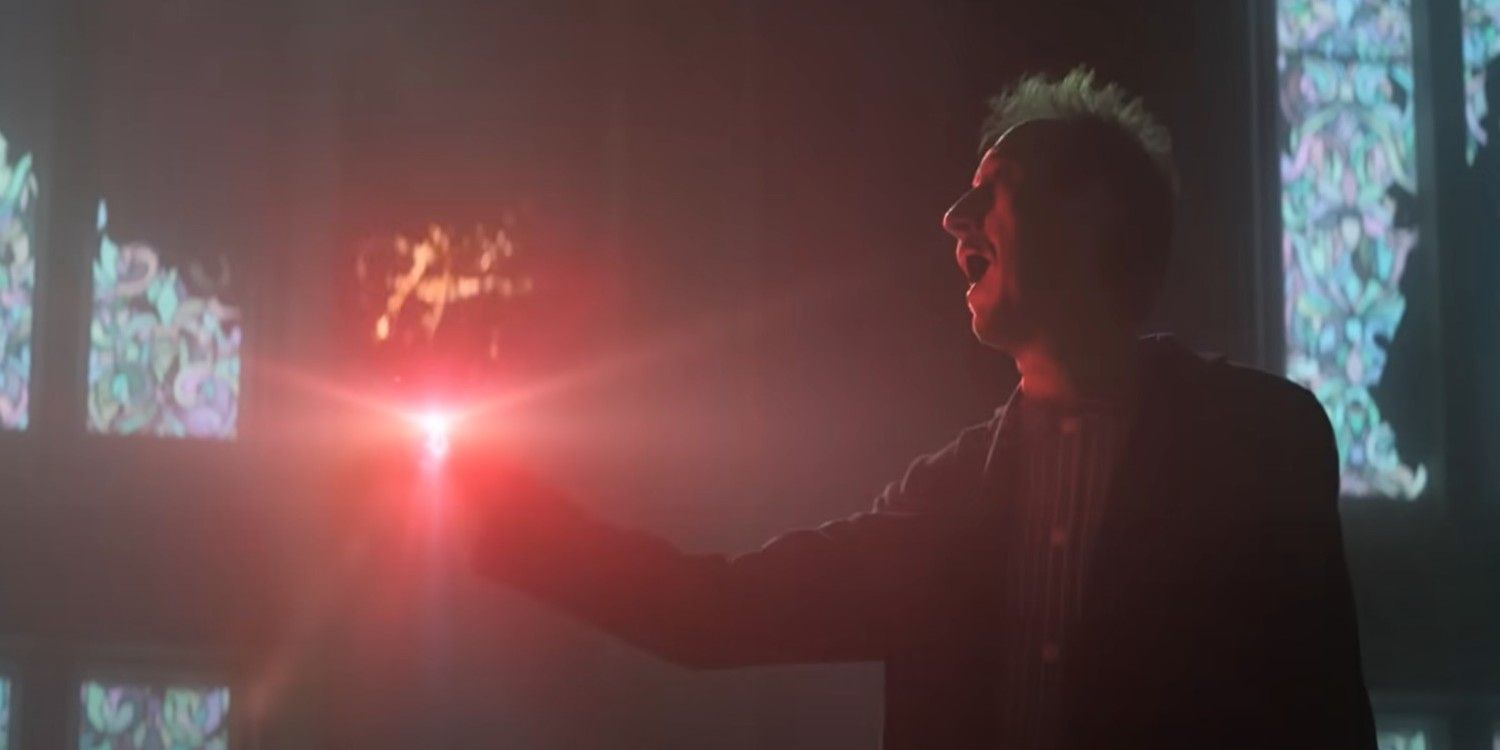This article contains SPOILERS for The Sandman.Netflix’s The Sandman, adapting Neil Gaiman’s comics of the same name, refines its storyline by explaining John Dee’s diner episode with more depth than the comics. The story’s long-awaited transition from page to screen has met with generally favorable reviews from fans and critics alike and pulled many familiar faces from other properties, such as Jenna Coleman of Doctor Who as Johanna Constantine and Patton Oswalt from Ratatouille as Matthew the Raven. Notably, its first season is also comprised of a combination of two of the comics’ original storylines, giving the show additional breathing room to adapt the plot.
Among The Sandman’s changes from comics to show is John Dee (David Thewlis), known as Dr. Destiny in the original story. In the adaptation, John’s relationship with his mother, Ethel Cripps (Joely Richardson), is made more personal, intimate, and complicated, particularly concerning the lies she tells her son. While in the comics John escapes from Arkham Asylum on his own after his mother sends him a charm of protection post-mortem, in the show John is fully present for her death. Additionally, in Netflix’s The Sandman, John and Ethel discuss John’s father, Sir Roderick Burgess (Charles Dance), and she tries to convince him to return Dream’s (Tom Sturridge) tools and their powers, including the ruby, spurring John’s quest to create a more honest world.
The changes between Netflix’s The Sandman and the original explain John’s diner scene better than the comics do. The show provides more context to the chilling episode “24/7,” making the episode, and the season, tighter and more cohesive without detracting from the episode's horror elements. Additionally, Netflix’s version also makes John a stronger character while also using the diner episode to further develop Morpheus.
John Dee's Motive Works Better Than In The Comics
When Netflix’s The Sandman changes John’s motive for his escape, and his subsequent actions in the diner, from one of power and sadistic fun to one of honesty and stripping away lies, it makes him feel more grounded and interesting as a villain. This is particularly true given what happened to John Dee in season 1. When Dream’s power is returned to him and he simply returns John to sleep in his cell, there are no consequences for the lives John ended in the diner – his experience is circuitous in that he begins his story imprisoned and he ends there as well. This lack of justice for those tortured and killed by his hand, especially right after viewing the diner victims, is disconcerting when John’s motives were merely personal amusement. With the diner becoming an examination of truth and lies by a deeply troubled person instead of a power trip, his easy return to sleep is much more palatable. Additionally, John’s awareness of Dream’s connection to his past and the bitterness he harbors toward the lies of his family and their role in the sleeping sickness of 1916 makes his conflation of dreams, stories, and lies more compelling, giving his verity vendetta a stronger role in The Sandman season 1.
Beyond the greater depth of John’s motivations in Netflix’s The Sandman, his conflict with dreams, lies, and honesty gives greater weight to the show’s theme of the necessity of dreams as well. By allowing Dream the chance to show what John perceives as lies as the hopes and dreams of others, The Sandman further emphasizes the humanity of its characters, and a stronger rebuttal to the graphic violence John inflicts than the comics do. Dream’s perspective on humanity’s dreams also allows viewers a greater view of his character, especially as he reflects on the consequences of his absence, Dream's powers as an Endless, and his role in the universe.
Neil Gaiman’s comic version of The Sandman was deeply groundbreaking and inspiring, but also episodic by nature. With Netflix’s new adaptation, The Sandman has the chance to refine the characters and scenarios the comics presented, giving greater depth to encounters that could only fill an issue at a time. This includes expanding the themes and motives shared by the comics and show, all without losing the mythic connotation that defines The Sandman.


